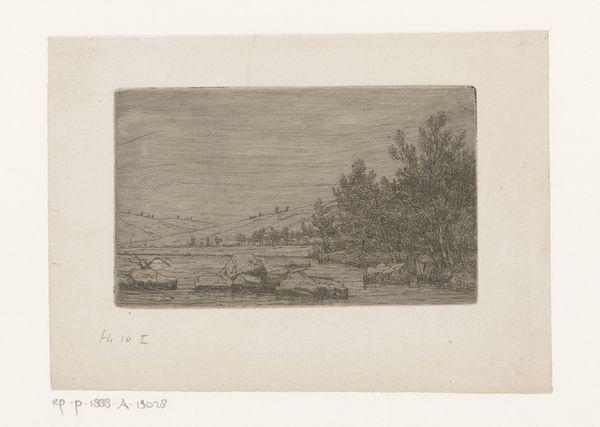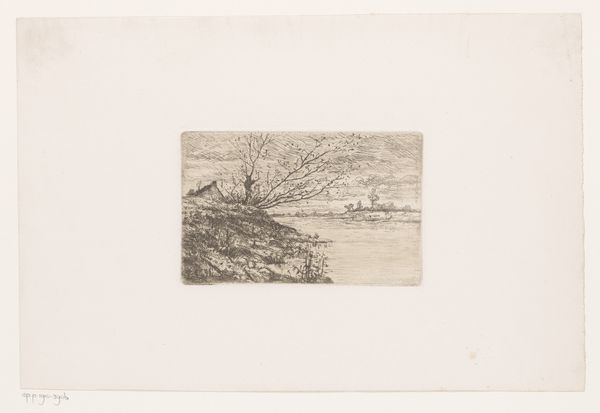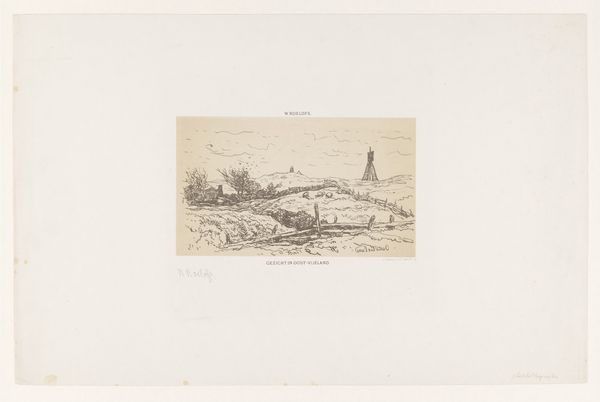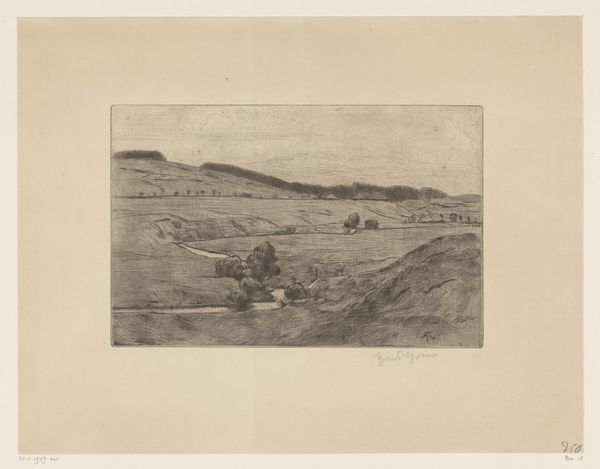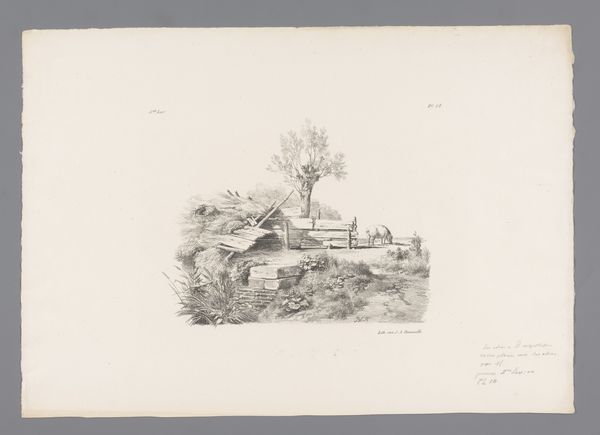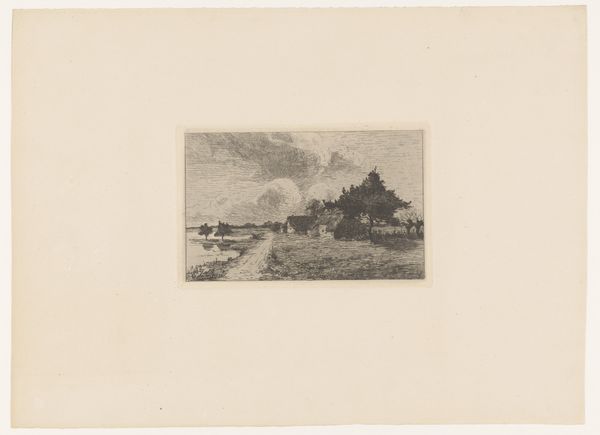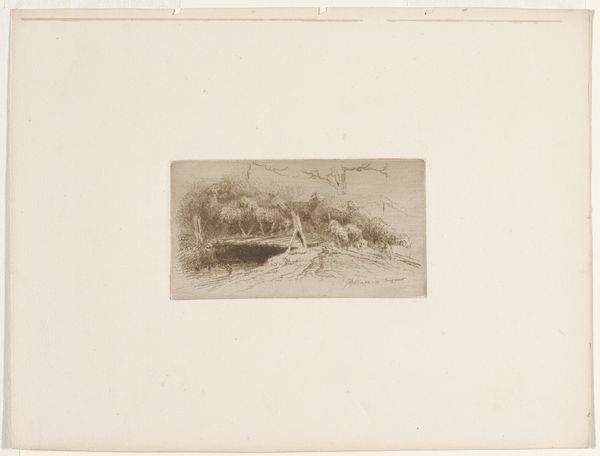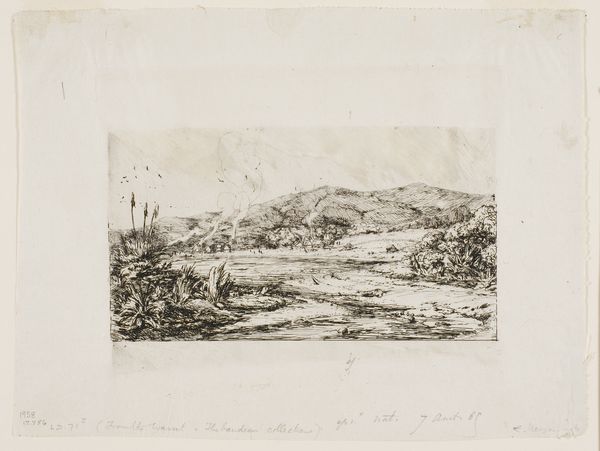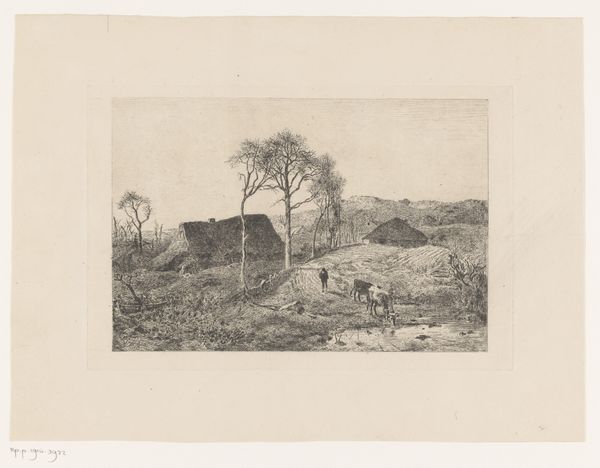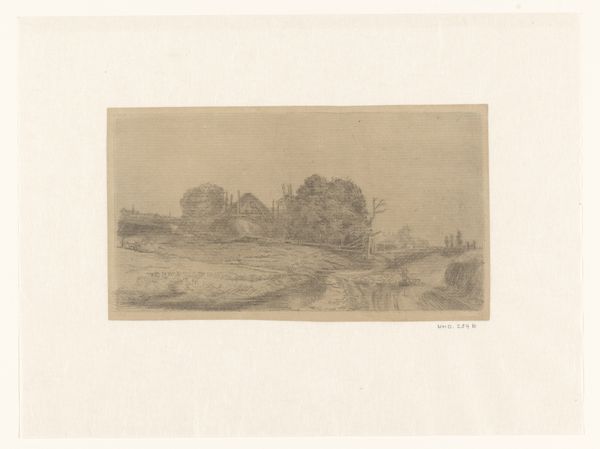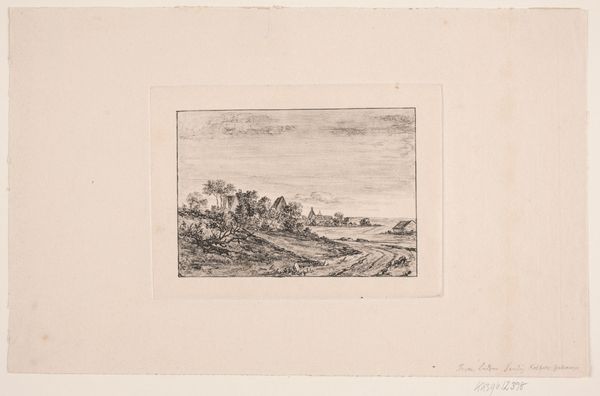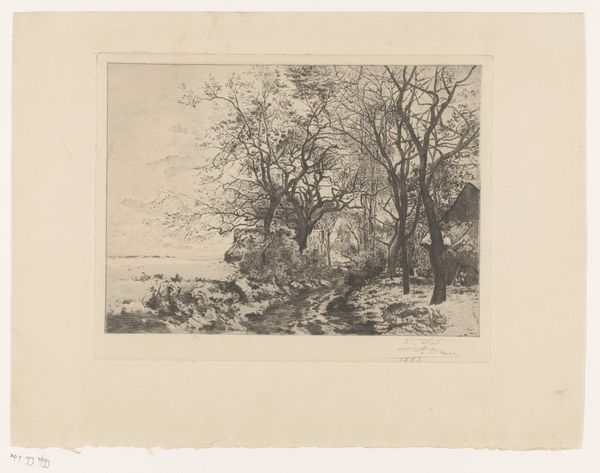
print, etching
# print
#
etching
#
landscape
#
realism
Dimensions: 5 3/16 x 8 15/16 in. (13.18 x 22.7 cm) (plate)12 1/16 x 16 1/2 in. (30.64 x 41.91 cm) (sheet)
Copyright: Public Domain
Editor: Stephen Parrish's etching "Powerville," created around the 19th century, depicts a serene industrial landscape. I am struck by its tranquil mood and incredibly delicate lines; what story does this seemingly calm scene tell you? Curator: Well, consider the title: "Powerville". Even in this quiet landscape, we sense the encroaching power of industry. The etching captures a moment in the transition from agrarian to industrial society, where factories began to reshape not just the landscape but also the social and economic fabric. Editor: So it’s not just about the buildings; it’s also about the change it represents? Curator: Exactly. Notice the canal and the barge. Waterways like this were arteries of industrial expansion, carrying resources and goods. This seemingly simple print provides a window into the evolving relationship between humans, industry, and the environment. What public role does this image play? Is it celebratory or cautionary, would you say? Editor: Perhaps it's a bit of both? It captures the beauty of the changing world, but it also suggests a certain… loss of innocence. Curator: A keen observation. Early photographs often idealized industrial progress. This artwork captures something a little deeper – the complexities inherent in change itself. Editor: This makes me appreciate how prints like this were more than just pictures; they were really about documenting, and perhaps even questioning, a turning point in history. Curator: Precisely, that’s how it has shaped public perception. I also find myself seeing through its connection of social responsibility, economic transformation, and the evolving role of art itself.
Comments
No comments
Be the first to comment and join the conversation on the ultimate creative platform.
